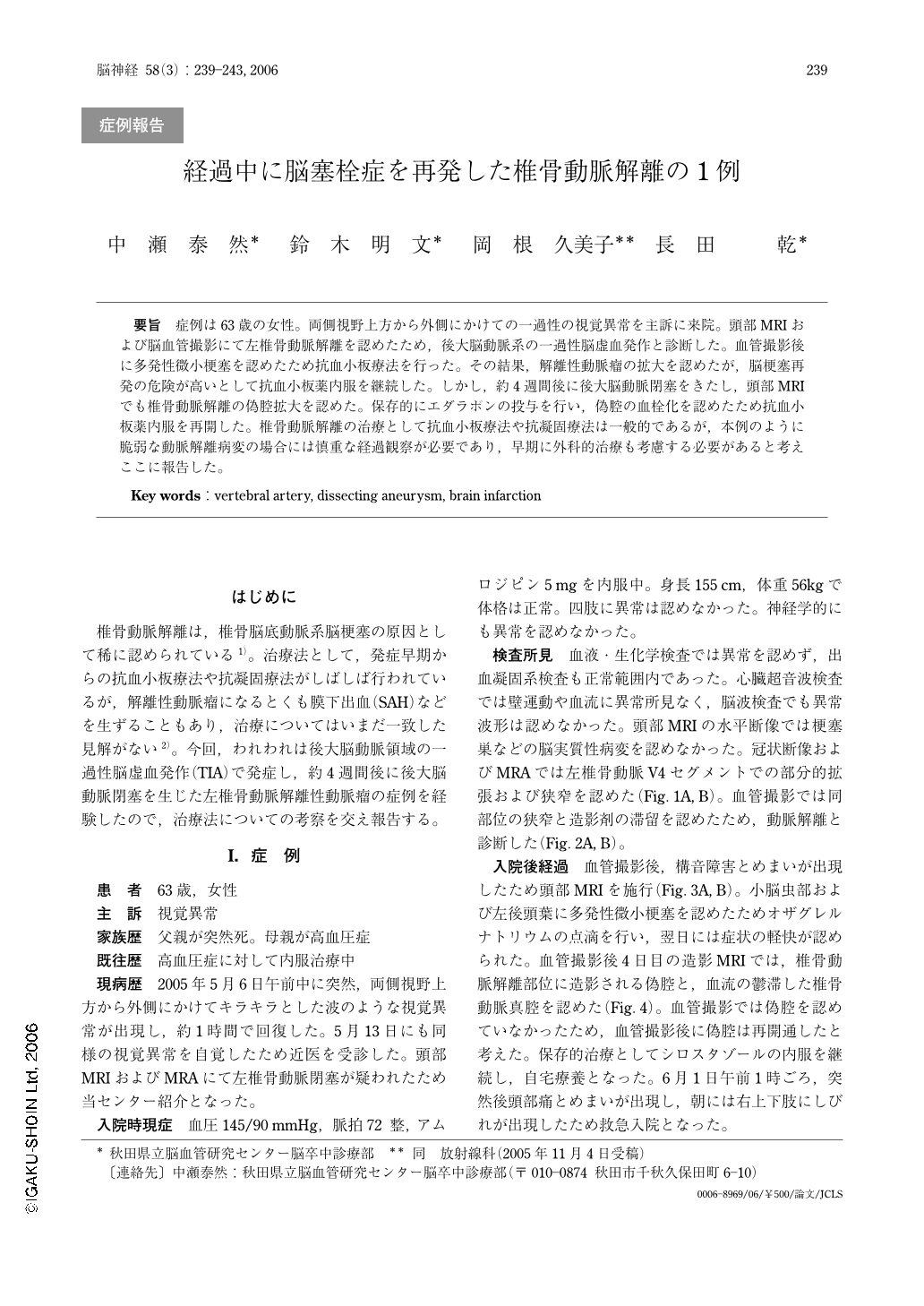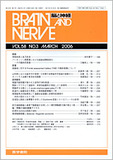Japanese
English
- 有料閲覧
- Abstract 文献概要
- 1ページ目 Look Inside
- 参考文献 Reference
症例は63歳の女性。両側視野上方から外側にかけての一過性の視覚異常を主訴に来院。頭部MRIおよび脳血管撮影にて左椎骨動脈解離を認めたため,後大脳動脈系の一過性脳虚血発作と診断した。血管撮影後に多発性微小梗塞を認めたため抗血小板療法を行った。その結果,解離性動脈瘤の拡大を認めたが,脳梗塞再発の危険が高いとして抗血小板薬内服を継続した。しかし,約4週間後に後大脳動脈閉塞をきたし,頭部MRIでも椎骨動脈解離の偽腔拡大を認めた。保存的にエダラボンの投与を行い,偽腔の血栓化を認めたため抗血小板薬内服を再開した。椎骨動脈解離の治療として抗血小板療法や抗凝固療法は一般的であるが,本例のように脆弱な動脈解離病変の場合には慎重な経過観察が必要であり,早期に外科的治療も考慮する必要があると考えここに報告した。
We report a 63-year-old case of the vertebral artery dissection with recurrent brain embolisms. She was admitted to the hospital because she suffered a visual symptom. She was examined by magnetic resonance imaging (MRI) and diagnosed a left vertebral artery (VA) dissection. Digital subtraction angiography (DSA) revealed the string sign on the left VA supporting the evidence of dissection. However, after DSA, multiple brain embolic stroke was occurred. She was treated with anti-platelet drug (sodium ozagrel), then, recanalization of the pseudo-lumen at the dissecting lesion was observed by MRI examination. Anti-platelet medicine (cilostazol) was taken for preventing reattack although the dissecting lesion was not closed. Following 4 weeks, brain embolisms were observed in the posterior circulation system. MRI revealed a dilated pseudo-lumen at the dissecting lesion with recurrent VA. This time, she was treated only with free radical scavenger (edarabone). After the occlusion of the dissected VA was observed, she started to take anti-platelet medicine again. It is generally accepted to use anti-platelet drug or anti-coagulant drug as a treatment of VA dissection causing brain ischemia. However, it should be assessed more carefully in cases showing recanalization of the pseudo-lumen as observed in this case. Surgical treatments should be taken into consideration at the early stage, especially for the cases presenting fragile dissecting lesions. Further study need to decide the effective treatment of the vertebral artery dissection.

Copyright © 2006, Igaku-Shoin Ltd. All rights reserved.


